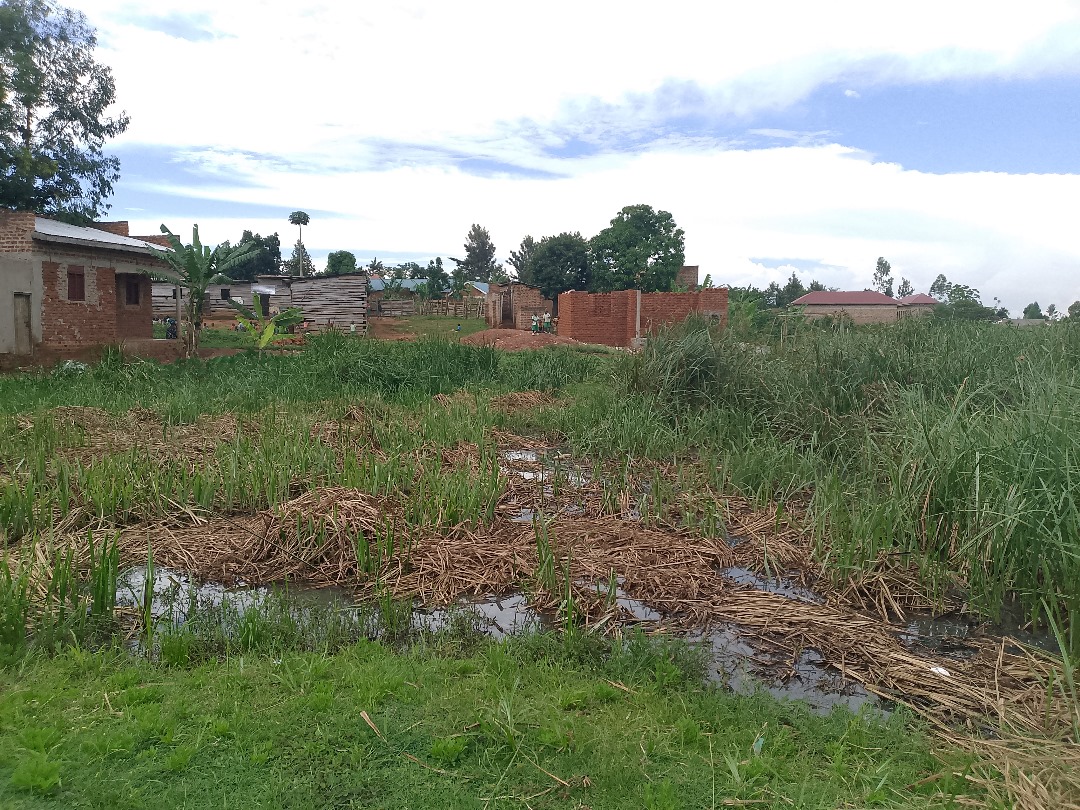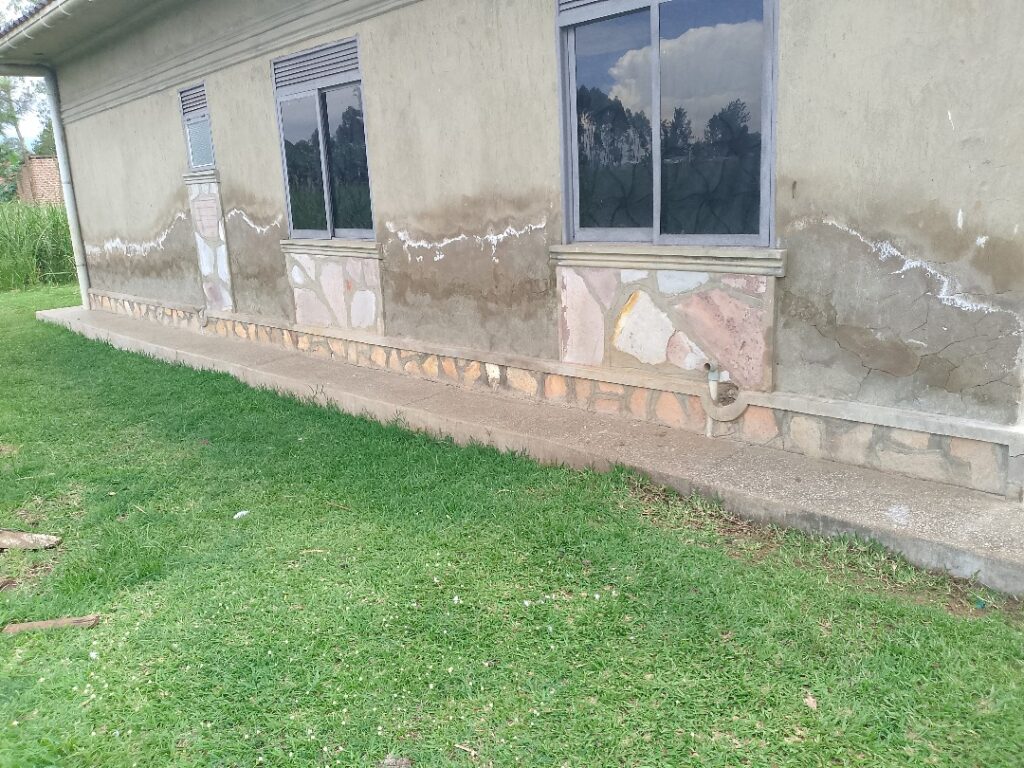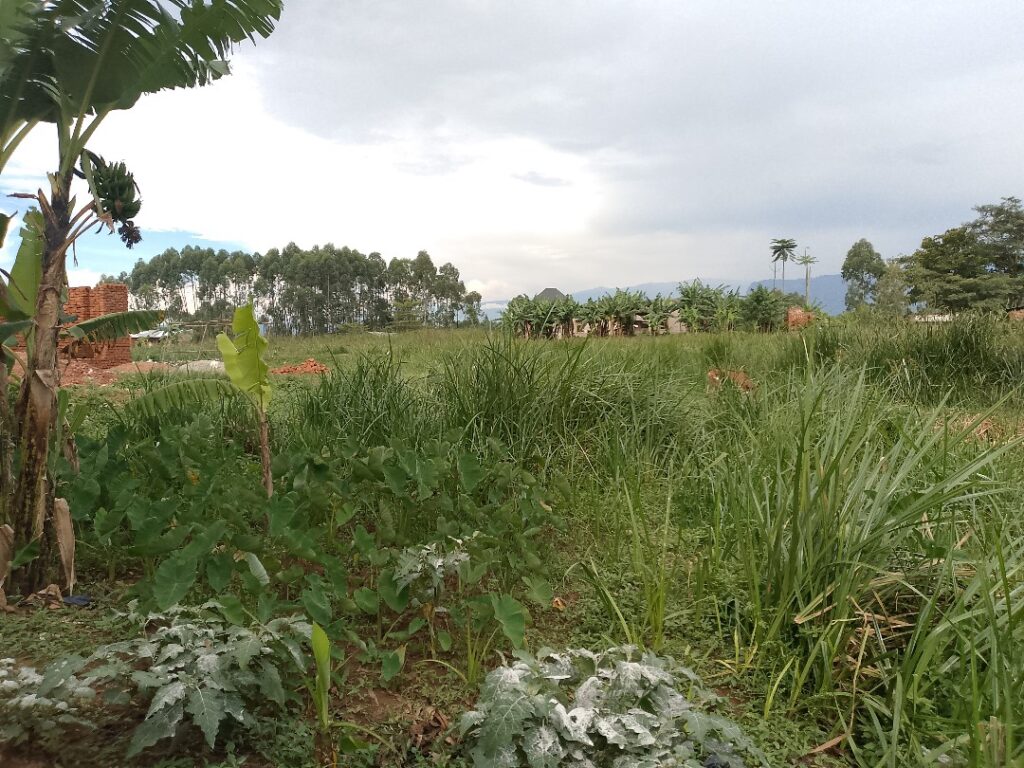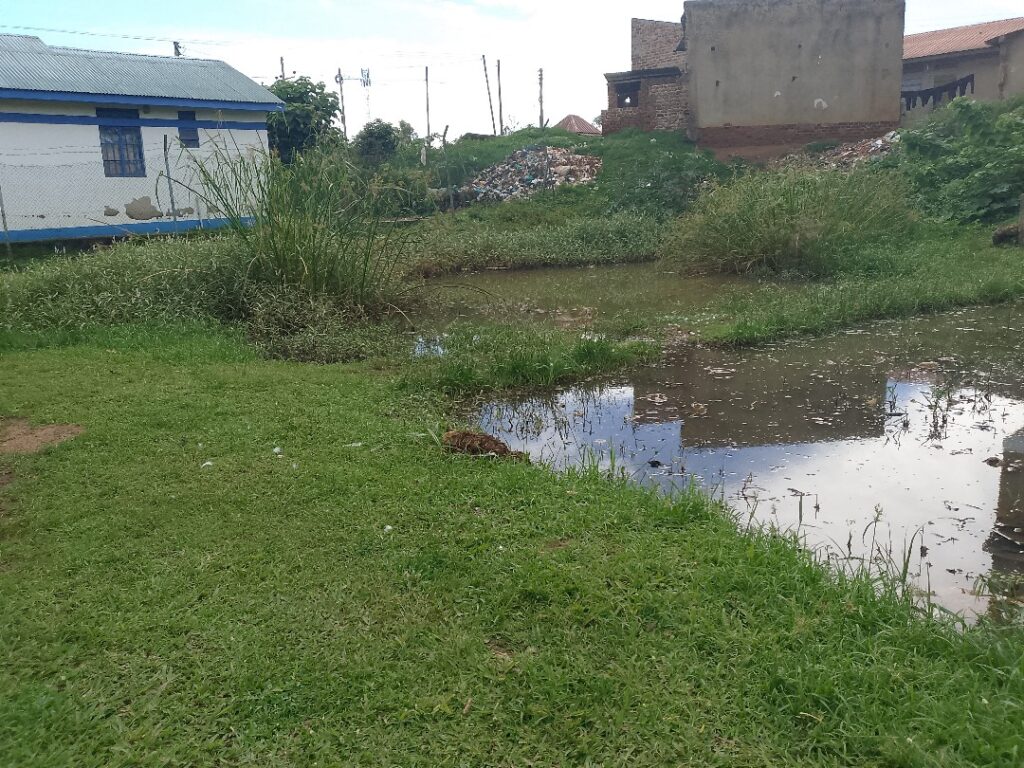
 Time FM
Time FM

 Time FM
Time FM
23 October 2025, 8:59 pm
By Gerald Welikhe
When the rains arrived in Namamba village this year, they came not as a blessing, but as a warning. Within hours, what was once farmland and homesteads turned into a vast swamp.
The people of this Mugiti subcounty community woke to find their homes half-submerged, their crops destroyed, and their lives once again upended by the floodwaters that now visit with frightening regularity.
For Sharon Wenene, 32, a mother of three in Namamba 1, the pattern has become all too familiar. “We can no longer sleep peacefully when the rains start,” she says, standing near a pool of muddy water still clinging to the edge of her compound. “Last time, the water entered our houses at night. We carried our children and ran to higher ground. Everything we left behind was destroyed.”
Just a few kilometers away, Higenyi Fred, 45, in Namamba 2, surveys what remains of his crops. “Our gardens are completely ruined,” he laments. “Cassava, maize, beans all gone. Rice survives, but it can’t meet all our needs. How do we pay school fees when there’s nothing left to sell?”
The floods have steadily worsened over the past five years, transforming manageable seasonal rains into devastating deluges. What once soaked the soil now swallows it whole. Fields remain submerged for weeks, turning productive farmland into stagnant ponds. When the water finally retreats, it leaves behind a layer of silt and despair.
The effects ripple far beyond the immediate destruction. Food insecurity has become widespread. Families who once relied on subsistence farming now depend on irregular food aid or remittances from relatives working in towns. Children often miss school because the single government school nearby sits across a flooded path in the neighboring subcounty.

Health has taken an equally harsh blow. Pools of stagnant water have become breeding grounds for mosquitoes, fueling a rise in malaria and waterborne diseases. Wenene says her family spends more on medicine than on food. “The children are always sick,” she says. “We can’t keep up.”
Roads, too, have become impassable. During peak floods, vehicles can’t reach the village. “We are cut off completely,” Higenyi says. “If someone falls sick, you pray the water lowers before it’s too late.”
Experts say Namamba’s plight mirrors the broader climate crisis reshaping Uganda and East Africa. According to data from the Uganda National Meteorological Authority (UNMA), annual rainfall intensity has increased by over 15% since 2000, while rainfall patterns have grown more erratic. Periods of heavy rain now alternate unpredictably with long dry spells a pattern consistent with global climate change models.
The Intergovernmental Panel on Climate Change (IPCC) has warned that East Africa is experiencing more frequent and severe flooding as global temperatures rise. In Uganda, the 2020 floods in Kasese district displaced over 13,000 people and destroyed critical infrastructure, while flash floods in Bududa have repeatedly buried entire villages under mud and debris, claiming hundreds of lives since 2010.

Namamba, though less mountainous, faces a similar tragedy on a slower scale. Poor drainage systems, blocked wetlands, and deforestation have magnified the floods. Once-absorbent landscapes are now sealed by compacted soil and encroachment, leaving water with nowhere to go.
“Climate change is no longer a theory for us it’s reality,” says Dr. Nankya Ruth, a climate researcher at Makerere University’s Centre for Climate and Resilience. “Communities like Namamba are living the consequences of global warming, deforestation, and inadequate land-use planning all at once.”
Residents are calling for urgent action from both district and national authorities. Their requests are simple but vital: better drainage, reforestation programs, and safe relocation for families in the most flood-prone zones.
“We’re not asking for luxuries,” says Higenyi. “We just need a way to survive. Our children deserve better than watching our homes flood every year.”
Despite repeated reports to local officials, many residents say the government response has been slow and fragmented. When contacted, Mugiti subcounty officials said they were “engaged in other field duties” and unable to comment at the time of interview.
In the meantime, locals have turned to small-scale solutions. Families dig makeshift trenches, raise their huts on mounds of soil, and plant banana stems to help absorb water. But such measures offer only temporary relief.
Uganda’s Office of the Prime Minister estimates that over 300,000 people nationwide are affected by floods each year a figure expected to rise as rainfall extremes intensify. In Budaka alone, local environmental officers report that at least 2,000 households have been displaced by floods or waterlogging since 2018.
The pattern shows no sign of slowing. Meteorologists warn that the El Niño weather phenomenon, now strengthening in the region, could bring even heavier rains through the end of the year, raising fears of further devastation.

For the residents of Namamba, hope now rests on whether those in power take notice before the next storm hits. “We’ve learned to live with water,” Wenene says quietly. “But each year, it comes closer to taking everything we have left.”
As the clouds gather again over Mugiti’s horizon, one question remains: how many more seasons will Namamba endure before help finally arrives?